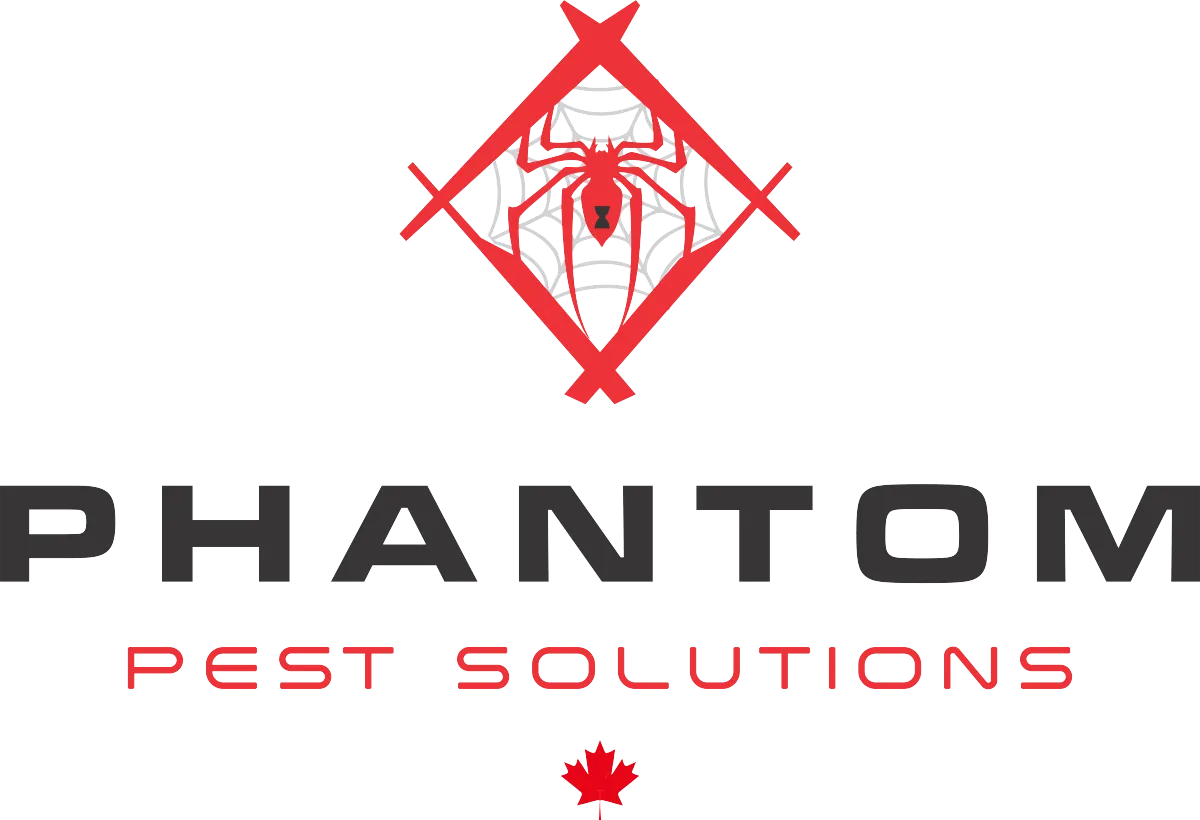
The Phantom Pest Journal

April Showers Bring… Pests? Dealing with Vancouver’s Moisture-Loving Invaders
Why Moisture Attracts Pests
Moisture and humidity create conditions that are not only comfortable for pests but essential for their survival and reproduction. Understanding why moisture draws pests can help you take proactive measures to safeguard your home.
1. Breeding Grounds
Moisture provides the perfect environment for pests to reproduce rapidly.
Stagnant Water: Mosquitoes, for instance, lay their eggs in stagnant water sources like birdbaths, clogged gutters, or puddles. A single puddle can support hundreds of mosquito larvae.
Damp Areas: Flies are drawn to damp garbage or compost piles, where they lay eggs that hatch into maggots within a matter of days.
Actionable Tip: Regularly inspect and empty containers, plant saucers, and other items that might collect water around your home.
2. Food Sources
Moisture accelerates the decomposition of organic matter, making it an attractive food source for pests.
Rotting Food and Waste: Flies and ants are particularly drawn to the smells of decomposing food, which becomes more potent in damp environments.
Mold and Fungus Growth: Mold and mildew, which thrive in humid conditions, can attract pests like cockroaches, which feed on these substances.
Actionable Tip: Maintain a clean kitchen, dispose of food waste promptly, and ensure garbage bins are tightly sealed.
3. Shelter
Many pests seek out damp areas for protection from predators and environmental conditions.
Basements and Crawl Spaces: These areas often have high humidity levels, providing an ideal refuge for pests like silverfish, cockroaches, and spiders.
Wall Voids and Insulation: Moisture can seep into structural voids, creating hidden, damp spaces where pests can nest undisturbed.
Actionable Tip: Use dehumidifiers and improve ventilation in spaces like basements, crawl spaces, and attics to deter pests.
4. Enhanced Survival
For some pests, moisture isn't just a preference—it's a necessity for survival.
Mosquito Larvae: These pests cannot develop without water, as their eggs require moisture to hatch.
Silverfish: They rely on damp conditions to maintain their soft exoskeletons and thrive in places like bathrooms or laundry rooms.
Actionable Tip: Fix leaks in pipes, faucets, and roofs promptly to reduce excess moisture indoors.
Common Moisture-Loving Pests in Vancouver
Vancouver’s rainy spring season creates ideal conditions for pests that thrive in damp environments. Here’s a closer look at the most prevalent moisture-loving pests in the area, the risks they pose, and practical steps you can take to prevent infestations.
1. Mosquitoes
Why They Thrive: Mosquitoes depend on stagnant water to lay their eggs, making puddles, clogged gutters, and even birdbaths prime breeding sites. The frequent rain in Vancouver increases the availability of these water sources.
Risks:
Health Hazards: Mosquitoes are known carriers of diseases like West Nile virus, dengue, and Zika virus.
Nuisance Factor: Their bites cause itchy welts, making outdoor activities uncomfortable.
Prevention:
Regularly empty or remove items that collect water, such as plant saucers, unused tires, or buckets.
Keep gutters clean and ensure proper drainage around your property.
Consider installing fine mesh screens on windows and doors to keep mosquitoes out.
2. Flies
Why They Thrive: Flies are attracted to decaying organic material, which decomposes faster in damp conditions. Moist garbage bins, food scraps, and compost piles are common hotspots for flies.
Risks:
Food Contamination: Flies carry bacteria such as salmonella and E. coli, contaminating food and surfaces.
Disease Transmission: Contact with flies can spread illnesses like dysentery and cholera.
Prevention:
Store garbage in tightly sealed bins and dispose of it regularly.
Clean spills and food crumbs promptly to remove attractants.
Ensure compost piles are well-managed and covered to deter flies.
3. Silverfish
Why They Thrive: Silverfish prefer dark, damp environments such as basements, bathrooms, and storage spaces. Vancouver’s humid climate creates ideal conditions for these pests.
Risks:
Property Damage: Silverfish feed on starchy materials, including paper, wallpaper glue, and fabrics, which can result in damaged books, important documents, and clothing.
Allergy Concerns: Their molted skins and droppings can contribute to indoor allergens.
Prevention:
Reduce humidity levels indoors by using dehumidifiers or improving ventilation in problem areas.
Seal cracks and crevices where silverfish might hide or enter.
Store paper items and fabrics in airtight containers to protect them from damage.
Long-Term Moisture Management Tips for a Pest-Free Vancouver Home
Here are some long-term moisture control tips to keep your home safe and pest-free year-round:
1. Install Dehumidifiers
Purpose: Dehumidifiers help regulate indoor humidity levels, especially in areas like basements, crawl spaces, and storage rooms where moisture tends to accumulate.
Benefits:
Reduces humidity, making conditions less favorable for pests like silverfish and mold-loving insects.
Improves air quality and reduces musty odors.
Action Plan:
Use a hygrometer to measure indoor humidity levels and aim to keep them below 50%.
Position dehumidifiers in areas prone to moisture buildup, and clean or replace filters regularly.
2. Repair Leaks Promptly
Common Culprits: Leaks from faucets, pipes, roofs, and appliances can lead to persistent dampness.
Why It Matters:
Even small leaks can create enough moisture to attract pests like cockroaches, ants, and termites.
Over time, leaks can cause structural damage and promote mold growth.
Steps to Take:
Inspect sinks, bathtubs, and toilets for dripping faucets or loose connections.
Check under appliances like dishwashers and washing machines for hidden leaks.
Conduct regular roof inspections to spot missing shingles or damaged flashing.
3. Maintain Gutters and Downspouts
Importance: Clogged gutters can lead to water pooling around your home’s foundation, creating breeding grounds for mosquitoes and carpenter ants.
Preventative Measures:
Clean gutters and downspouts at least twice a year, especially after heavy rainfall or during the fall when leaves accumulate.
Ensure downspouts direct water at least 6 feet away from your home’s foundation.
Consider installing gutter guards to minimize debris buildup.
4. Regular Home Inspections
Why Inspect Regularly: Routine checks can help you identify damp areas or early signs of pest infestations before they escalate.
What to Look For:
Moisture Signs: Water stains, peeling paint, or condensation on walls and windows.
Pest Activity: Droppings, gnawed wood, or pest nests in attics, basements, and crawl spaces.
Structural Issues: Cracks in the foundation or gaps around windows and doors.
Inspection Schedule:
Conduct inspections seasonally, especially in spring and fall when moisture levels can fluctuate.
Pay extra attention to areas that are naturally damp or poorly ventilated.
Visit our website [https://phantompestcontrol.com/ ] to book your inspection. Let’s work together to keep your home pest-free this year and beyond!

Schedule a Pest Inspection
Ready to schedule a pest inspection? Contact us today.

